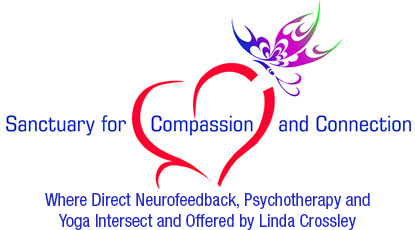Increasing stress and anxiety in children – can yoga help?
Although my adolescent days are several decades behind me, I still clearly remember the stress I experienced during those years, not only from the academic pressures but from the social pressure to “fit in”, while trying to manage potentially conflicting expectations from family and friends. Unfortunately, I was not taught ways to manage that stress, although I had to take PE classes and voluntarily participated in sports regularly after school. So, when I moved through my early adult years and began to work full-time, I attempted to continue to participate in those sports to help relieve the chronic stress I felt, only to discover that it wasn’t working. The only relief I discovered at that time was planning and taking vacations, where I found I didn’t want “to do” anything but relax. And there was simply not enough vacation time to effectively create the required balance in my life to reduce the growing anxiety I was experiencing.
It wasn’t until I found yoga – in mid-life – that I experienced an immediate sense of release of tension, stress, and anxiety. I still tell people that ask me about yoga “I wish I found yoga at 4, instead of 40!”, although I am eternally grateful for finding it at all, as it truly has been a life saver. So when I read the recent research on how yoga can help children cope with stress and manage their anxiety symptoms, my heart’s sense of gratitude grew even more.
Eight published studies were reviewed together and found that school children who regularly practice yoga show an improved ability to cope with stress and anxiety. And with the majority of children reporting growing academic pressures to achieve, along with more challenging family life with both parents needing to work outside of the home, it’s about time we offer our children a life-time tool to create more balance in their bodies and minds. What makes yoga different than the typical physical education classes currently offered in schools is that it is a meditative movement practice and it does not have a competitive focus. There are no winners or losers. There is no forming of teams, leaving some children feeling inadequate in some way when they are picked last (or not at all) to join a team. It is most often practiced in a group setting, yet the practice encourages and welcomes individualized, unique experiences. It is a practice that can be done by everyone, regardless of size, shape, strength or flexibility level, and/or any other physical limitation, such as chronic health conditions, including asthma or diabetes.
The review article looked at the interventions, which incorporated postures, breath, concentration, and meditation that are different paths or parts of a full yogic practice, and came to the conclusion that these combined features of yoga, when practiced regularly by children, provide an accessible tool to reduce stress and anxiety. The author also recommended that yoga should be integrated into schools. It is my personal belief that by offering yoga to children – even before they enter school – sets them up not only for success in life but happiness too. And don’t our children deserve that balance!












Leave a Reply
Want to join the discussion?Feel free to contribute!